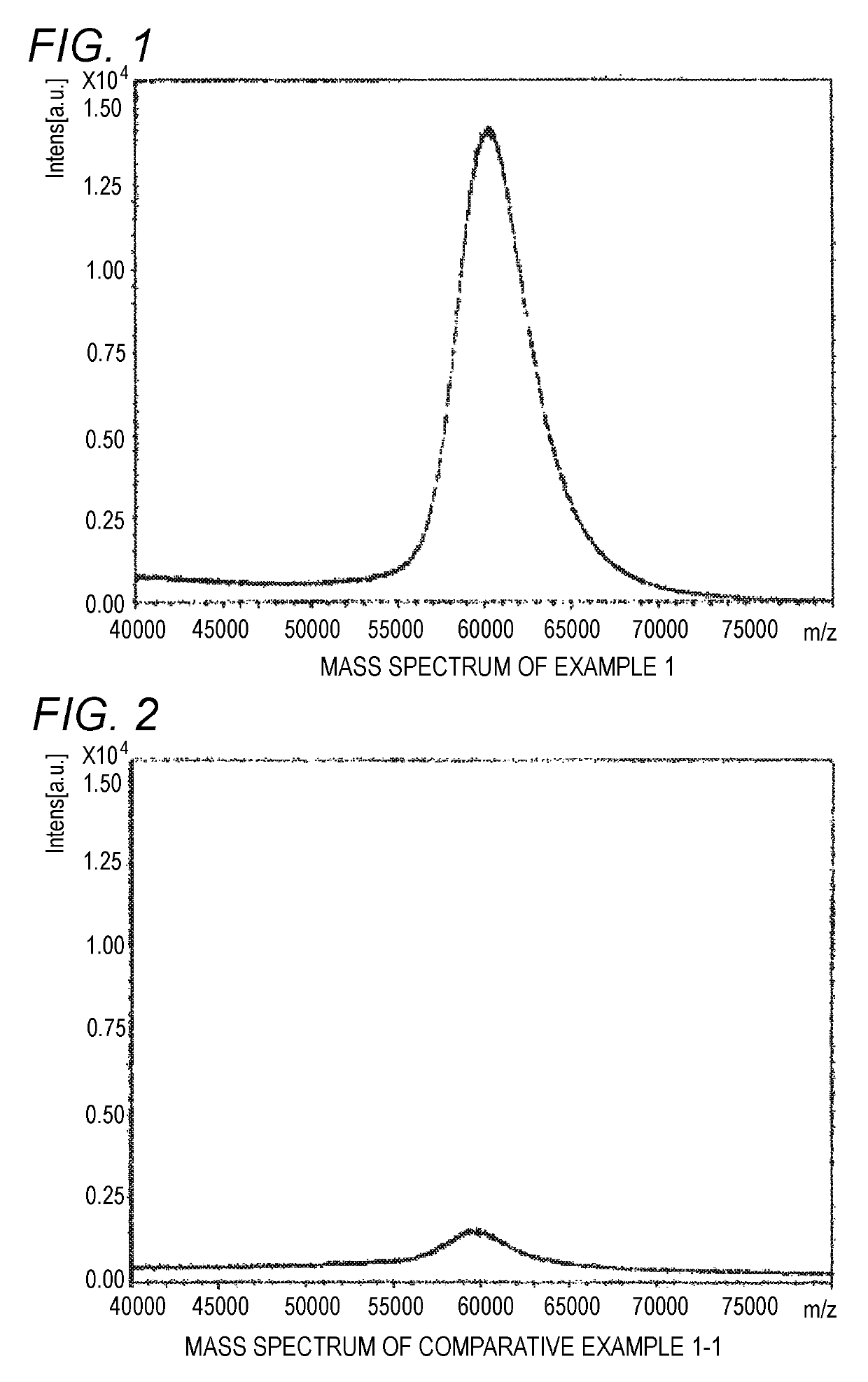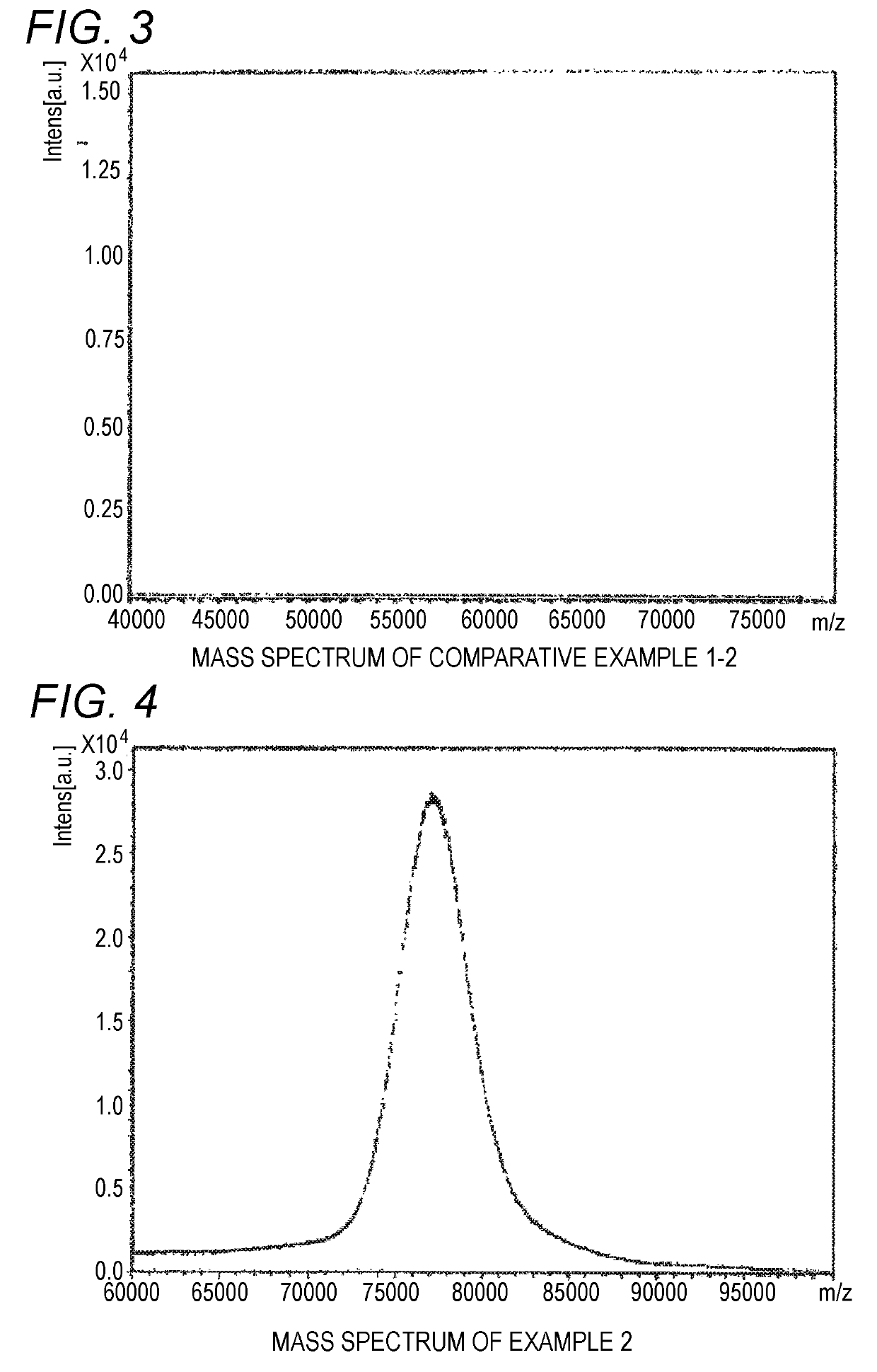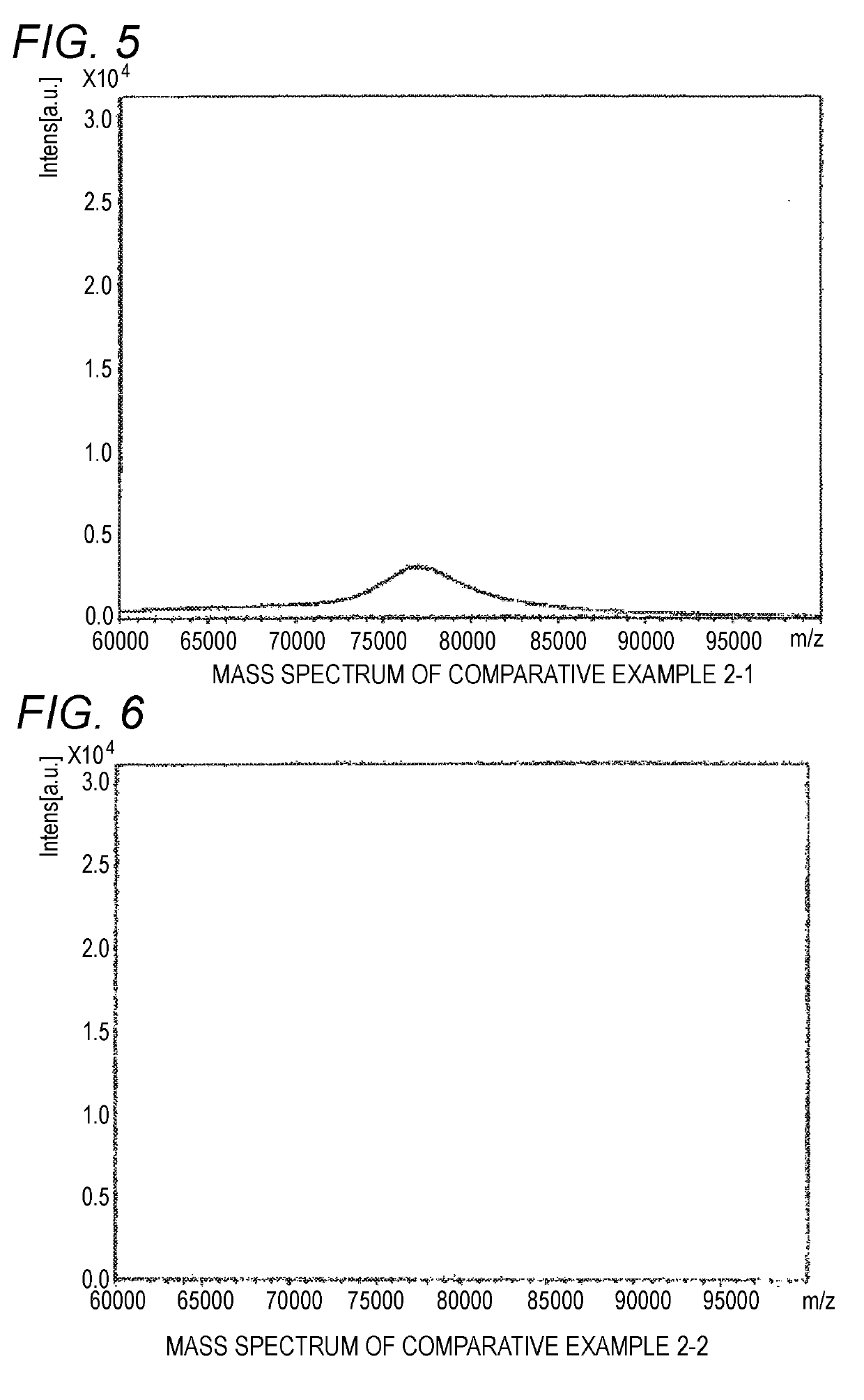Matrix-assisted laser desorption mass spectrometry of high molecular weight polyoxyethylene derivative
a technology of mass spectrometry, which is applied in the direction of material analysis, particle separator tube details, instruments, etc., can solve the problems of insufficient signal intensity in many cases, laser irradiation is remarkable, and the molecular weight of the high molecular weight polyethylene glycol derivative is difficult to measure by maldi mass spectrometry, etc., to achieve better analysis results, high signal intensity, and sufficient signal intensity
- Summary
- Abstract
- Description
- Claims
- Application Information
AI Technical Summary
Benefits of technology
Problems solved by technology
Method used
Image
Examples
example 1
[0058]Trans-2-[3-(4-tert-butylphenyl)-2-methyl-2-propenylidene]malononitrile (Santa Cruz Co., purity of 99% or more, 1-octanol / water partition coefficient of 4.6) was used as a matrix for MALDI mass spectrometry, a branched polyethylene glycol derivative SUNBRIGHT GL2-600HO (produced by NOF, molecular weight of 60,000, Compound 1 shown below) was used as a sample, and sodium trifluoroacetate was used as an ionizing agent. A tetrahydrofuran solution of the matrix for MALDI mass spectrometry (concentration of 20 mg / mL), a tetrahydrofuran solution of the branched polyethylene glycol derivative (concentration of 60 mg / mL) and a tetrahydrofuran solution of sodium trifluoroacetate (ionizing agent) (concentration of 2 mg / mL) were mixed in 100:1:2 (volume ratio).
[0059]1 μL of the mixed solution of the matrix for MALDI mass spectrometry, the branched polyethylene glycol derivative and the ionizing agent was dropped with a micropipette on a target for MALDI mass spectrometry and dried. The ta...
example 2
[0065]The measurement and evaluation were performed under the same conditions as in Example 1 except for using a tetrahydrofuran solution of SUNBRIGHT GL4-800HO (produced by NOF, molecular weight of 80,000, Compound 2 shown below) at concentration of 80 mg / mL. The signal intensity in the case of using the preparation method of the sample for MALDI mass spectrometry of Example 2 was 23,734 counts. The mass spectrum chart obtained in Example 2 is shown in FIG. 4.
[0066]
example 3
[0070]The measurement and evaluation were performed under the same conditions as in Example 1 except for using a tetrahydrofuran solution of SUNBRIGHT MEH-40T (produced by NOF, molecular weight of 40,000, Compound 4 shown below) at concentration of 40 mg / mL. The signal intensity in the case of using the preparation method of the sample for MALDI mass spectrometry of Example 3 was 1,390 counts. The mass spectrum chart obtained in Example 3 is shown in FIG. 7.
H—(OCH2CH2)908—OMe Compound 4
PUM
| Property | Measurement | Unit |
|---|---|---|
| 1-octanol/water partition coefficient | aaaaa | aaaaa |
| 1-octanol/water partition coefficient | aaaaa | aaaaa |
| 1-octanol/water partition coefficient | aaaaa | aaaaa |
Abstract
Description
Claims
Application Information
 Login to View More
Login to View More - R&D
- Intellectual Property
- Life Sciences
- Materials
- Tech Scout
- Unparalleled Data Quality
- Higher Quality Content
- 60% Fewer Hallucinations
Browse by: Latest US Patents, China's latest patents, Technical Efficacy Thesaurus, Application Domain, Technology Topic, Popular Technical Reports.
© 2025 PatSnap. All rights reserved.Legal|Privacy policy|Modern Slavery Act Transparency Statement|Sitemap|About US| Contact US: help@patsnap.com



